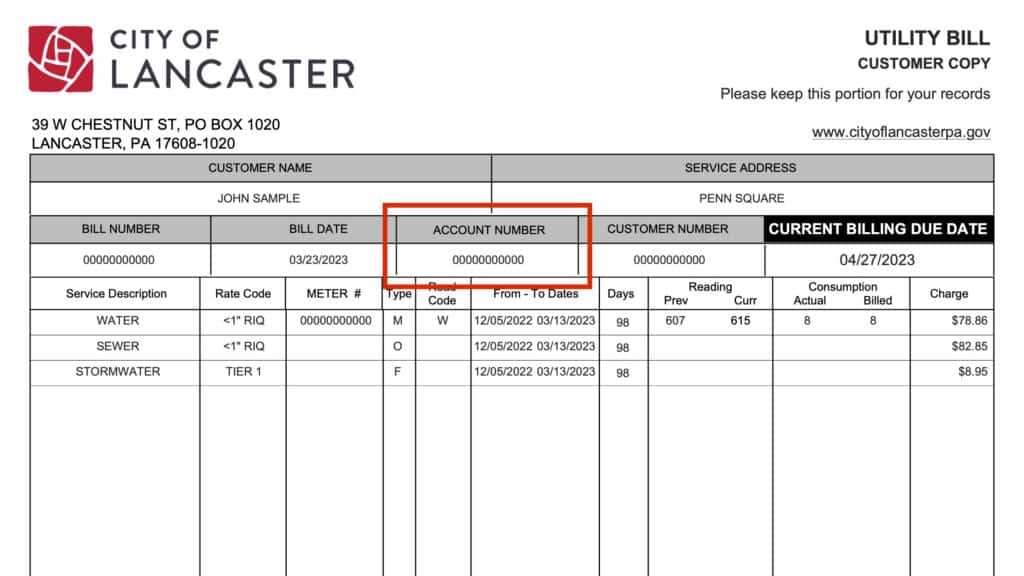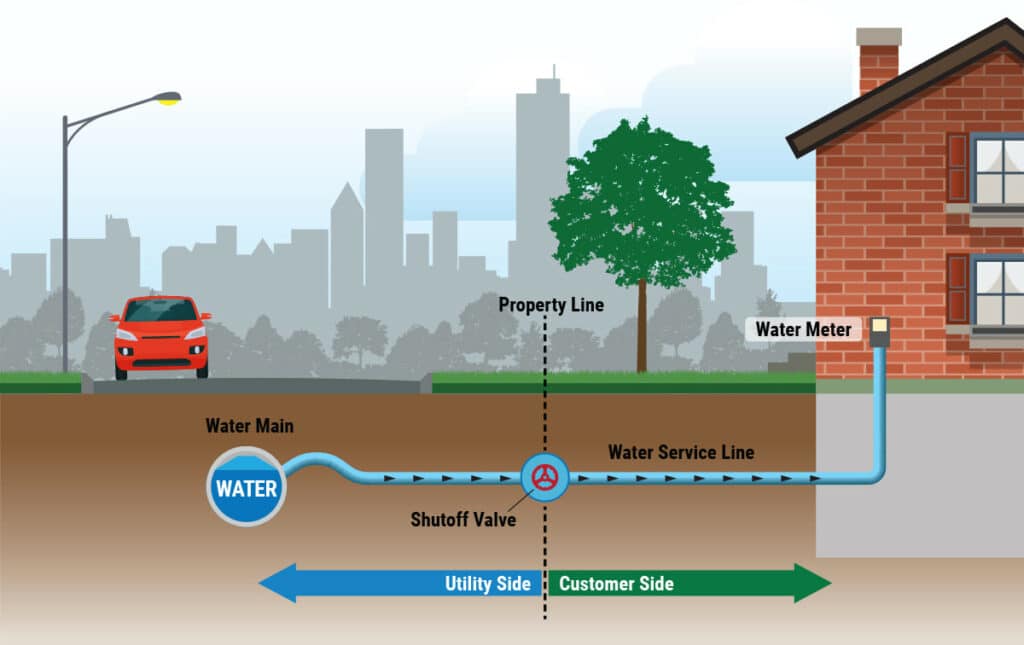Please note all submissions are being reviewed by the Water Bureau. Due to the high volume of responses, reviewing and verifying your submission may take longer than expected.
Lead Service Line Inventory Project
The City of Lancaster provides drinking water to more than 120,000 people in the City and surrounding metropolitan area. Our two water treatment plants operate around the clock, 7 days a week, producing 20-26 million gallons of drinking water daily that meets state and federal safety standards.
During 2023 and 2024, in addition to performing routine maintenance and upgrades to our water treatment and distribution system, we will be taking steps to identify the types of service line materials used by each of our customers. The service line is the pipe that connects your home or building to the water main in the street. Service lines may be made of lead, copper, galvanized metal, or plastic.
The U.S. EPA’s Lead and Copper Rule Revision requires us to identify all lead service lines by October 2024. Through the normal course of our work upgrading and repairing water mains, we have identified and replaced hundreds of lead service lines. However, thousands are still unknown and we’re going to need your help to comply with this federal requirement.
We’re asking water customers to verify the material of the customer-owned portion of their water service line. If you verify having a lead or galvanized service line, you will receive follow-up instructions. The City of Lancaster will replace lead or galvanized service lines in accordance with state regulatory requirements. Don’t delay, verify today!
Verify your water service line material
Verifique el Material de su Línea de Servicio de Agua
Video Introduction
Progress Tracker
WATER SERVICE LINE EXAMPLES
LEAD AND DRINKING WATER
The City of Lancaster Bureau of Water conducts routine testing to ensure that our product meets all state and federal water quality requirements. Lead is not detected in City drinking water when it leaves the treatment plants and there is no current concern about lead at large in our water system.
Lead contamination of drinking water is often the result of corrosion in the plumbing or water service lines belonging to water customers. The Bureau of Water treats water to prevent corrosion and leaching of lead into the water supply.
If present, elevated levels of lead can cause serious health problems, especially for pregnant women and young children. Lead in drinking water is primarily from materials and components associated with service lines and home plumbing. The City of Lancaster Bureau of Water is responsible for providing high quality drinking water but cannot control the variety of materials used in customer plumbing components.
Though there is no safe level of exposure to lead, historically the City of Lancaster’s water supply has met state and federal water quality standards. You can review our Annual Water Quality Report here.
MINIMIZING THE POTENTIAL FOR LEAD EXPOSURE
When your water has been sitting for several hours, you can minimize the potential for lead exposure from lead-based plumbing components by flushing your tap for 2 to 5 minutes before using water for drinking or cooking.
If you are concerned about lead in your water, you may choose to have your water tested. Information on lead in drinking water, testing methods, and steps you can take to minimize exposure is available from the U.S. EPA’s Safe Drinking Water Hotline or at www.epa.gov/safewater/lead.
In Lancaster City, childhood lead poisoning is most often due to deteriorated, lead-based paint. When the paint peels and cracks, it makes lead dust. Children can be exposed to lead when they swallow or breathe in lead dust. Homes built before 1978 (when lead-based paints were banned) are likely to contain lead-based paint, and over 80% of the homes in Lancaster City were built before 1978.
The City of Lancaster offers the Lead Hazard Control & Healthy Homes Program, funded by the Department of Housing & Urban Development (HUD), which helps qualified homeowners, landlords and renters reduce risks related to lead-based paint exposure and improve the safety and overall condition of their homes. Learn about the program and see if you’re eligible at cityoflancasterpa.com/lead.
Water Service Line: Utility Side vs. Customer Side
Water Bill Example: Finding Your Account Number


